Rhombus Properties
Hi there. In this math post, I want to go over properties of the rhombus shape. The motivation of this post was me helping a high school student on this topic. It has been a long while since I have looked at this particular geometry topic.
References:
- https://www.mathwarehouse.com/geometry/quadrilaterals/parallelograms/rhombus.php
- https://www.mathsisfun.com/geometry/rhombus.html
- https://www.varsitytutors.com/hotmath/hotmath_help/topics/rhombus
Topics
- Rhombus Shape Properties
- Perimeter Of A Rhombus
- Area Of A Rhombus
- Diagonals Of A Rhombus
- Finding Missing Side Lengths And Angles Of A Rhombus Example
Rhombus Shape Properties
A rhombus is a four sided shape (quadrilateral) where all the side lengths are equal. The rhombus also has two pairs of side where the sides opposite to each other are parallel. The rhombus is also a parallelogram.
In terms of the angles inside a rhombus, the four angles inside the rhombus add up to 360 degrees. Not all the four angles are of the same measure unless the rhombus is a square if all the four angles are 90 degrees each. The rhombus has two pairs of angles where one pair of angles are acute angles (less than 90 degrees) that are opposite to each other. The second pair of angles in the rhombus are also opposite to each other and are obtuse angles (greater than 90 degrees).
Image is from: https://www.mathsisfun.com/geometry/rhombus.html
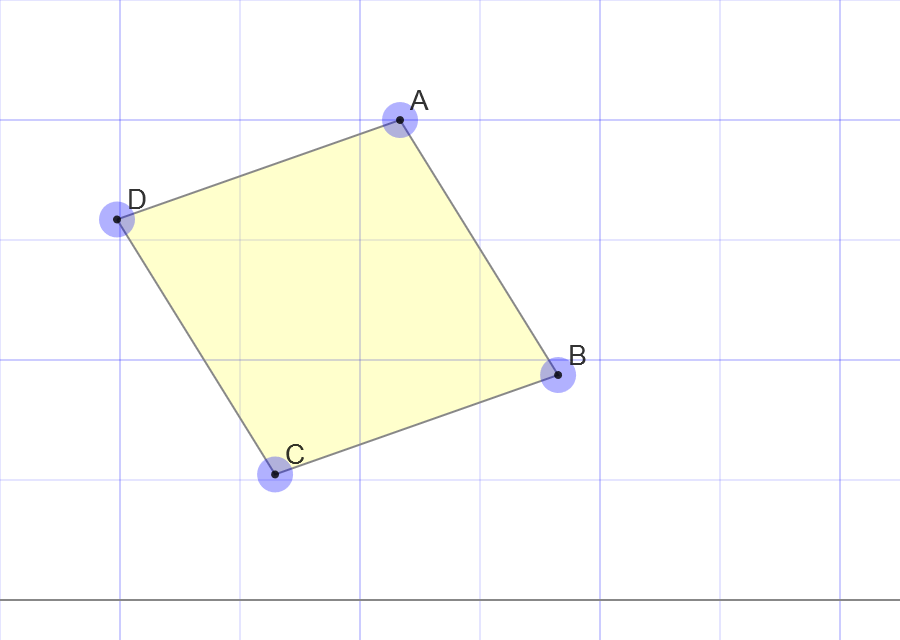
Perimeter Of A Rhombus
To find the perimeter of any two-dimensional shape, we add all the outside side lengths together. With the rhombus, it is easy as all four side lengths of the rhombus are the same. The perimeter for the rhombus can be computed by doing four times of one side length of the rhombus.

Diagonals Of A Rhombus
In order to get to the area of the rhombus, we need to talk about the diagonals of a rhombus. Diagonals of the rhombus can be drawn with lines that connect from one corner to its opposite corner. There would be two diagonals in the rhombus where one diagonal is longer than the other.
The two diagonals bisect each other inside the rhombus at a 90 degree angle (perpendicular). In addition, the two diagonals also bisect the angles at each of the rhombus corners.
Image from https://www.mathwarehouse.com/geometry/quadrilaterals/parallelograms/images/rhombus/.
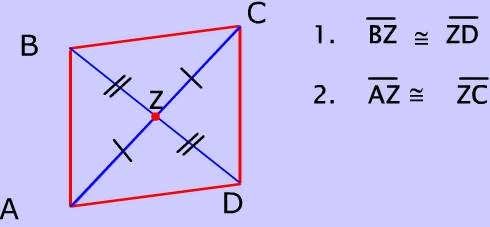
Area Of A Rhombus
Given the two diagonals of the rhombus, you can find the area of the rhombus. Let the longer diagonal length of the rhombus be represented by p and let the other diagonal length be represented by q. The area of the rhombus is the product of p and q divided by 2.

Finding Missing Side Lengths And Angles Of A Rhombus
We have enough properties for solving problems for finding missing side lengths and angles for a rhombus. (I assume that the reader knows the Pythagorean Theorem is known. Let's try a few examples.
Example One
Consider the rhombus picture below. I used the MathIsFun website drawing tool. (Yes I know it looks kind of bad.)
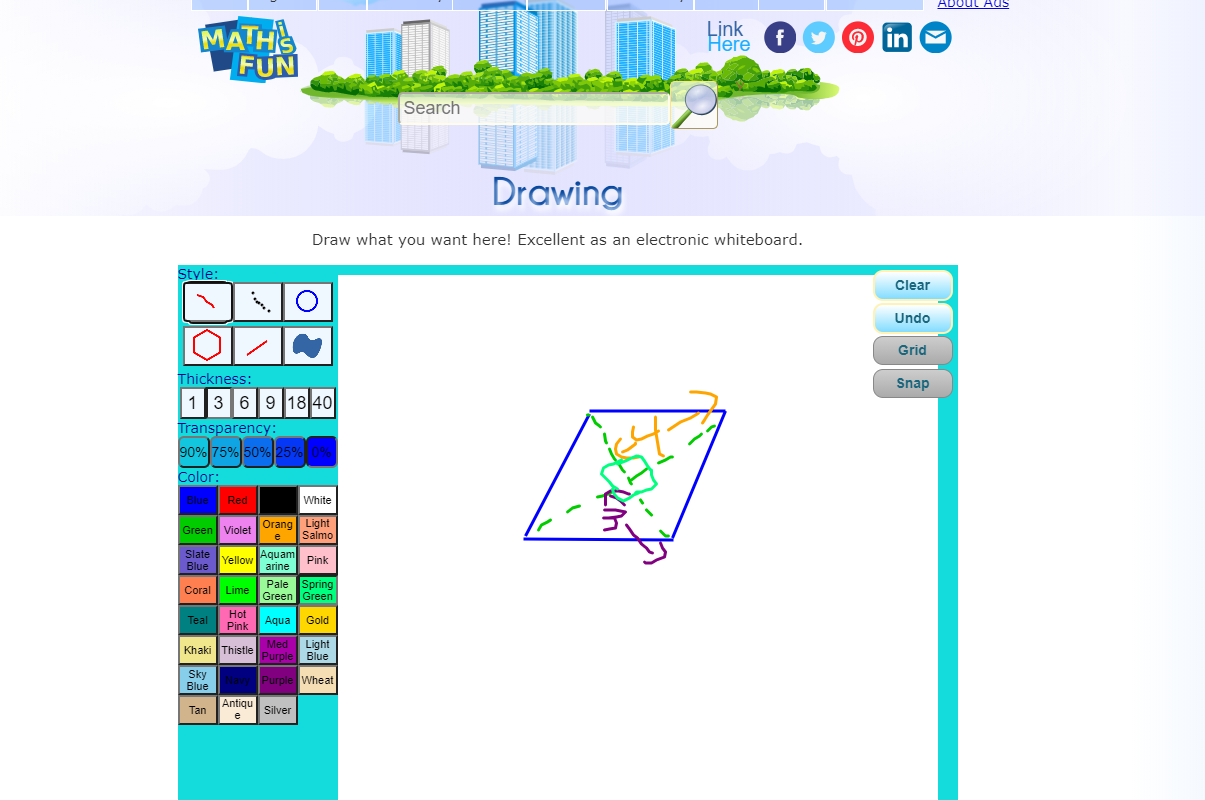
a) What is the area for the rhombus?
b) Determine the perimeter of the rhombus.
The given values inside the rhombus are the lengths of half of each of the two diagonals. Doubling the number four gives eight for the length of the longer diagonal. The shorter diagonal would be six which is from double of 3 units.
This rhombus area can be computed by multiplying 8 and 6 together and then taking half of the product. The area of this rhombus would be half of 48 which is 24 square units.
Finding the perimeter of the rhombus is a little bit more involved as it requires the Pythagorean Theorem to find the length of one of the outside sides. (Look at another screenshot picture below.)
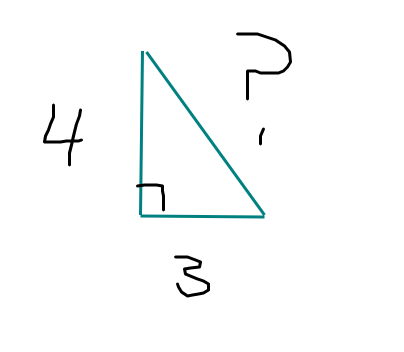
Solving for the longest side of this right angle triangle is not too difficult with the Pythagorean Theorem.
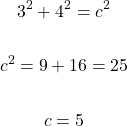
This means that one of the rhombus side lengths is 5 units. The perimeter for this rhombus is four times five which is 20 units.
Example Two - Finding Missing Angles
In this second example, we need rhombus angle properties and knowledge of supplementary angles to solve this algebra problem.
Given a rhombus ABCD with a side length of x. (We won't use the side length anyways.) The angle measure at A is x + 9 and the angle measure for B is 3x - 1. (Vertex B is next to A.) What is the value of x? In addition what are the two distinct angles in this rhombus?
Due to laziness, I did not provide a drawn picture.
In a rhombus, two non-opposite angles are not of the same measure. The two angles are actually supplementary angles where both of these angles add up to equal 180 degrees. With this fact, we can set up this equation.

Combining like terms and solving for x will lead into the answer for the first question.

The value for x is 43. This value would be substituted into x + 9 and into 3x - 1 to determine the two distinct angles in this rhombus.
Doing x = 43 in x + 9 gives an angle measure of 52 degrees. Substituting x with 43 in 3x - 1 gives 128 degrees. You can confirm that 52 degrees and 128 degrees are indeed supplementary as they do add up to 180 degrees.
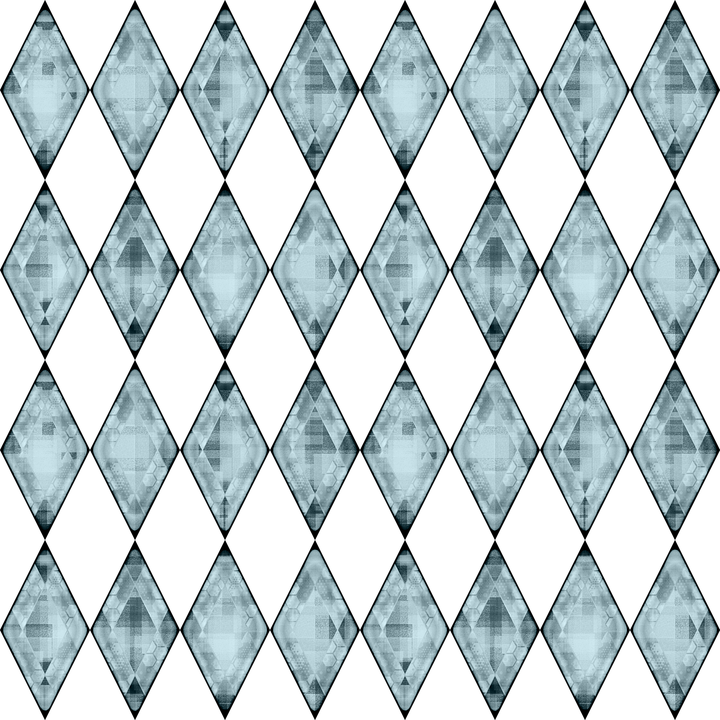
Posted with STEMGeeks